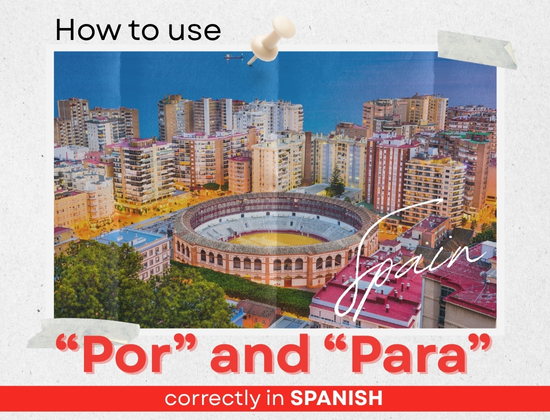
How to Use “Por” and “Para” Correctly in Spanish
.
If you’ve ever been stuck wondering whether to use por or para in Spanish, you’re not alone. These two tiny prepositions might seem interchangeable at first, but they can change the meaning of a sentence entirely, and yes, sometimes hilariously! Whether you're saying thank you, discussing travel, or explaining your goals, selecting the right word can make all the difference. So let’s break down the mystery and help you sound more natural, confident, and fluent in your Spanish conversations.
Understanding the Basics: Por vs. Para
Both por and para mean “for” in English, but they’re used in very different contexts. Think of them like two different tools: one is for causes, the other for purposes.
-
Use por to explain the reason, cause, or means of something.
-
Use 'para' to discuss the goal, recipient, or destination.
A quick rule of thumb
Por answers the question “Why?”
Para answers the question “What for?”
Por — When You're Talking About Cause or Movement
Use por when you're referring to:
-
Cause or reason:
-
Lo hice por ti. (I did it because of you.)
-
Means or method:
-
Viajamos por tren. (We traveled by train.)
-
Exchange or substitution:
-
Te cambio mi sándwich por tu manzana. (I’ll trade you my sandwich for your apple.)
-
Duration:
-
Viví en México por tres meses. (I lived in Mexico for three months.)
-
Through or along a place:
-
Caminamos por el parque. (We walked through the park.)
Para — When You Have a Goal or a Destination
Use para when you're referring to:
-
Purpose or intention:
-
Estudio para aprender. (I study in order to learn.)
-
Recipient:
-
Este regalo es para ti. (This gift is for you.)
-
Deadlines or future dates:
-
La tarea es para mañana. (The homework is for tomorrow.)
-
Destinations:
-
Salimos para Madrid. (We’re leaving for Madrid.)
-
Employment:
-
Trabajo para una empresa internacional. (I work for an international company.)
Handy Tip: The Acronyms
Want a shortcut? Try remembering these:
-
PERFECT for para
(Purpose, Effect, Recipient, Future dates, Employment, Comparison, Toward a place) -
ATTRACTED for por
(Around a place, Through a place, Transportation, Reason, After something, Cost, Thanks, Exchange, Duration)
Practice Makes Perfect
Try this:
-
Gracias por venir (Thanks for coming) – cause
-
Este café es para ti (This coffee is for you) – recipient
By using por and para correctly, you won’t just be speaking Spanish—you’ll be speaking it smartly.












